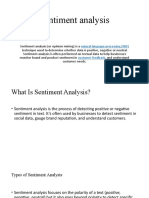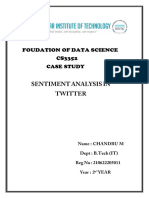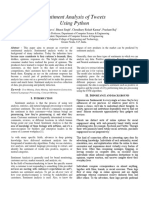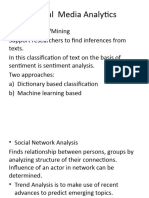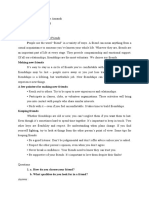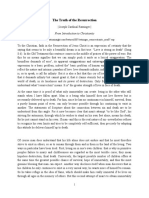0% found this document useful (0 votes)
13 views8 pagesSentiment Analysis
Sentiment analysis is the process of evaluating digital text to determine its emotional tone, which helps businesses understand customer opinions and improve brand reputation. It involves various techniques such as polarity detection, emotion detection, and fine-grained sentiment analysis, utilizing methods from lexicon-based to deep learning approaches. Case studies, like Coca-Cola's 'Share a Coke' campaign, demonstrate the practical applications and benefits of sentiment analysis in real-world scenarios.
Uploaded by
msrinath9700Copyright
© © All Rights Reserved
We take content rights seriously. If you suspect this is your content, claim it here.
Available Formats
Download as PDF, TXT or read online on Scribd
0% found this document useful (0 votes)
13 views8 pagesSentiment Analysis
Sentiment analysis is the process of evaluating digital text to determine its emotional tone, which helps businesses understand customer opinions and improve brand reputation. It involves various techniques such as polarity detection, emotion detection, and fine-grained sentiment analysis, utilizing methods from lexicon-based to deep learning approaches. Case studies, like Coca-Cola's 'Share a Coke' campaign, demonstrate the practical applications and benefits of sentiment analysis in real-world scenarios.
Uploaded by
msrinath9700Copyright
© © All Rights Reserved
We take content rights seriously. If you suspect this is your content, claim it here.
Available Formats
Download as PDF, TXT or read online on Scribd
/ 8





